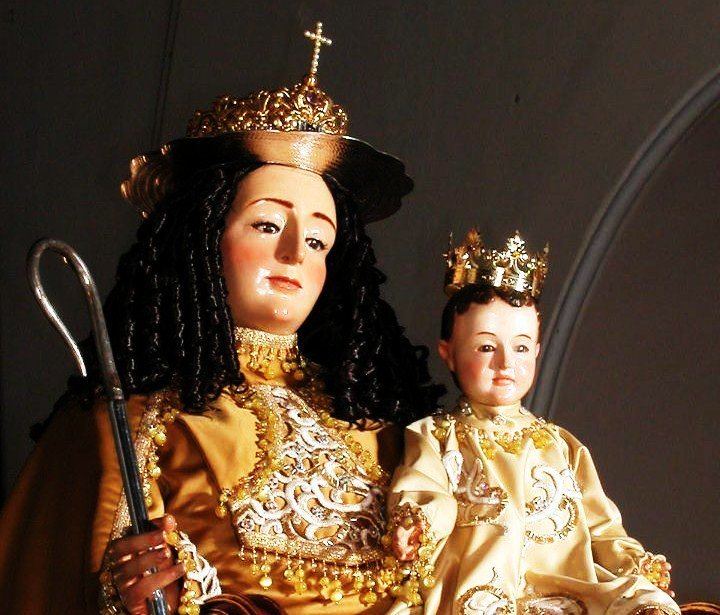 | ||
Similar Divina Pastora de Cantillana, Our Lady of the Rosary of Chiqui, Monument to La Paz, Virgin of El Rocío, Virgin of Miracles | ||
Divina Pastora (Divine Shepherdess) is a statue of the Virgin Mary holding the infant Jesus, with a lamb at her side. It is considered to be one of the most important religious icons of Venezuela. Divina Pastora is the patron saint of the city of Barquisimeto and of the Venezuelan National Militia. The original image dates from 1735. Divina Pastora is celebrated in a procession on January 14 of each year, when a massive Marian procession occurs, considered to be one of the largest in the world, attracting thousands of pilgrims.
Contents
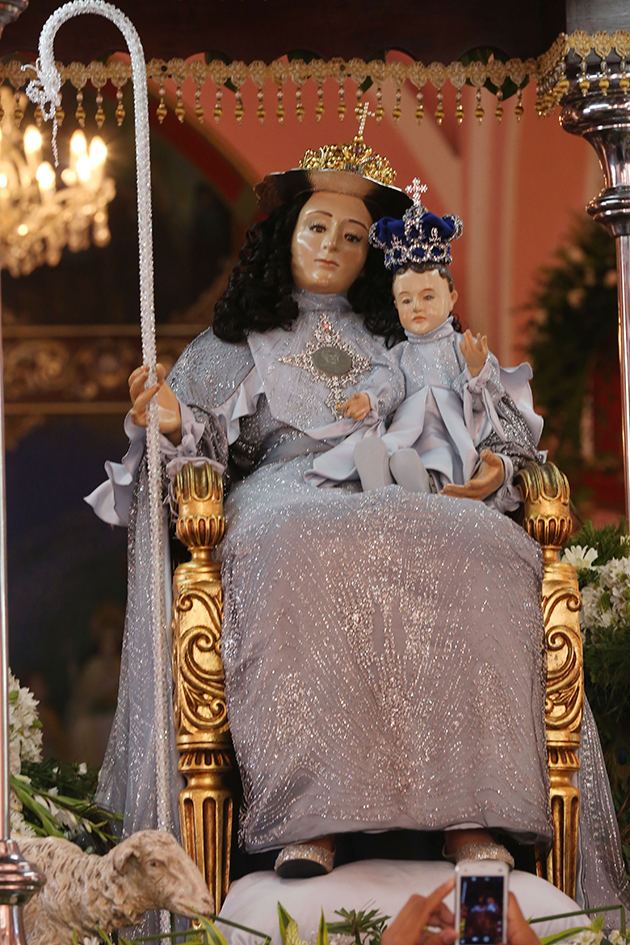
The statue is removed from its shrine and is carried on the main streets of Barquisimeto in a procession which starts at the Iglesia de la Divina Pastora in Santa Rosa until it reaches the Barquisimeto Cathedral. This procession is unlike other mass Marian celebrations in the world, where the image does not leave its temple. This procession occurs due to the devotion the people of Barquisimeto have towards it as gratitude towards saving the city from a cholera outbreak that occurred in the city in the 19th century. In 2013, 3,000,000 faithful honored the Divina Pastora.
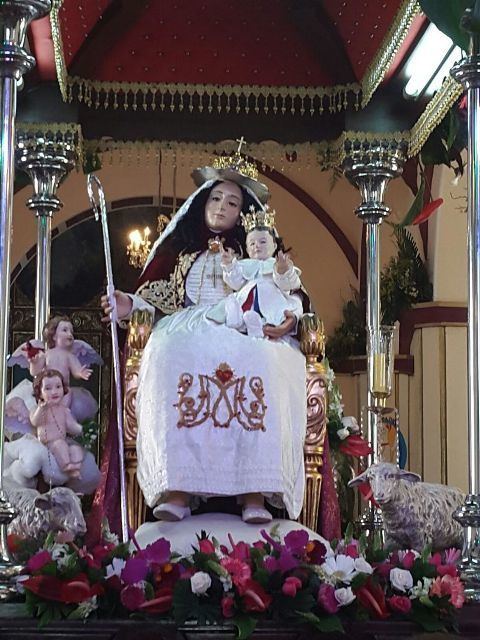
Location

The Divina Pastora statue is enshrined in the Iglesia de la Divina Pastora in the village of Santa Rosa, which is on the outskirts of Barquisimeto. During the annual procession, it travels approximately 5 miles (8.0 km) to the Barquisimeto Cathedral.
Background
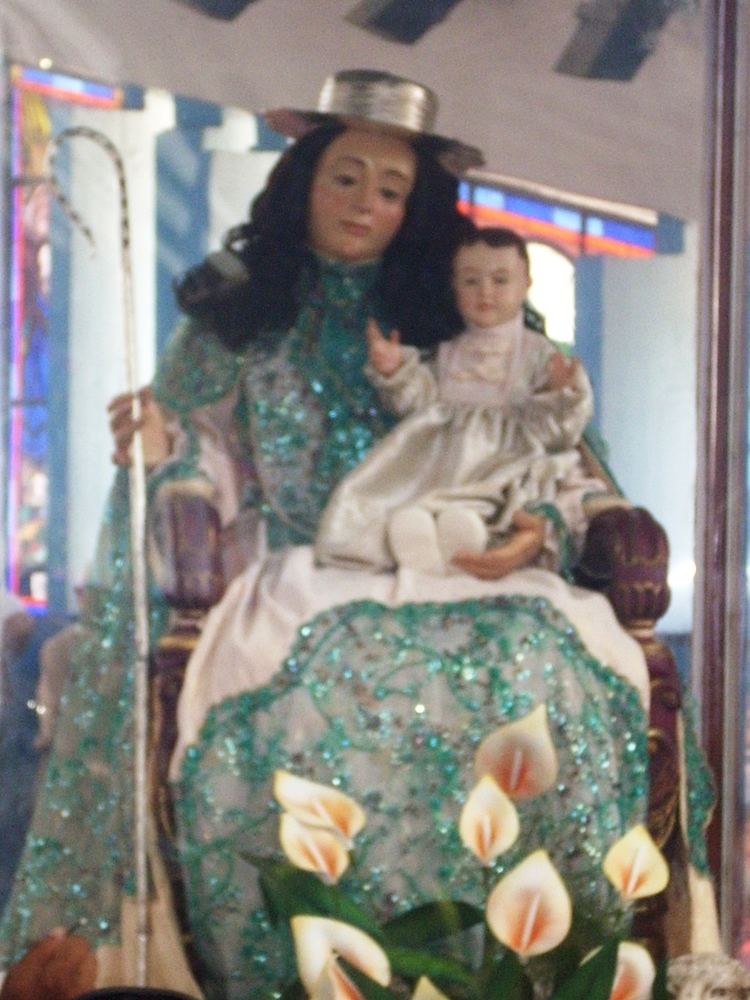
According to the history books, this tradition comes from Seville, Spain. A Capuchin friar, Isidore of Seville, had a dream in which he saw an image of the Divina Pastora. Days later, he gave to the artist Alonso Miguel de Tovar, a detailed description of his vision, so that he could paint it. The painting of the virgin with pastoral hat, covered by a blue mantle, holding a boy in her left hand and a lamb in her right one, was called "Divina Pastora de Almas". Later, the sculptor Francisco Antonio Ruiz Gijón, made a life-sized sculpture of the Divina Pastora, which was carried in its first procession in 1705.
History

The devotion to the Divina Pastora in Venezuela, dates from 1736, when the parish priest of the town of Santa Rosa commissioned a sculptor to make a statue of the Immaculate Conception. Unexpectedly, the figure that was delivered was of the Divina Pastora. The priest wanted to return it, but the packing crate could not be lifted. The whole town took this as a sign that the statue wanted to remain in Santa Rosa. In 1855, the status of the Divina Pastora as the patron saint of the Venezuelan state of Lara was further established, when a cholera epidemic occurred, striking a great number of families in Barquisimeto. Desperate, they implored the Divina Pastora for help. It is said that Father Jose Macario Yépez, parish priest of the La Concepción church of Barquisimeto, offered himself before the Virgin, to be the last victim of the disease. Some accounts say that the priest died six months later and that the epidemic then left the city; others indicate that his supplications stopped the epidemic immediately. The January 14th procession commemorates this event. In 2011, a group of vandals destroyed part of the Divina Pastora monument. The heads of sheep were decapitated and the face of the Virgin was hit by a bullet. Other images in the town were also vandalized with paint or destroyed.
Procession
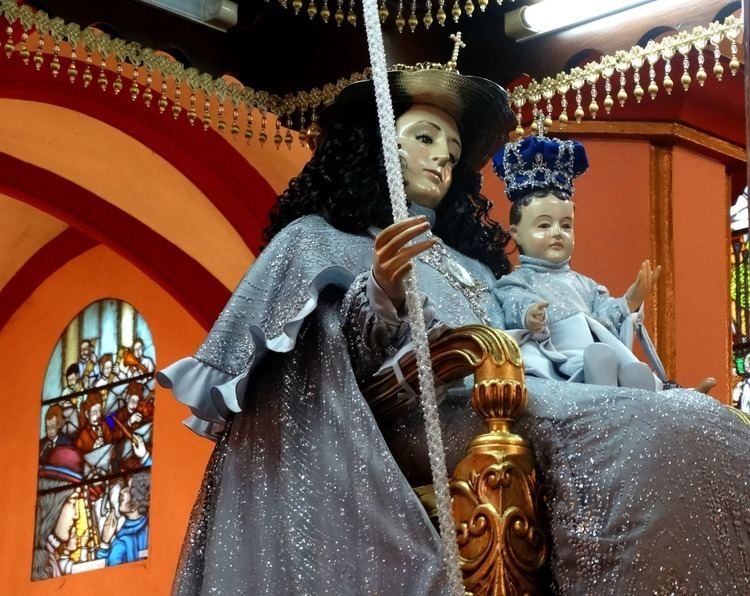
Each January 14, the statue is carried by 6 to 10 men and women, accompanied by a procession of more than 2 million people, some barefoot and carrying crosses, from the Church of Santa Rosa, in the village of Santa Rosa near the city, to the Metropolitan Cathedral of Barquisimeto. It is a festive occasion, with countless street vendors selling anything from food to liquor and small religious figurines along the route that snakes through the city. Every year the Virgin is dressed differently by a local fashion designer and Her gown is donated by devotees paying penance. During the next couple of months, on her return trip, she stops at other churches in Barquisimeto, arriving back to Santa Rosa in time for Palm Sunday.
On January 14 of each year, there is in Lara state a procession in honor of the Divine Shepherdess, in which people move the image from the church in the village of Santa Rosa to the Metropolitan Cathedral of Barquisimeto, this route is a little more than 7.5 km. kicking off with the last Mass in the outskirts of the temple of Santa Rosa at 10:00 am. The Virgin pilgrimage begins at approximately 11:30 am; the procession lasts nearly 7 hours, taking the traditional stop at the square Macario Yepez. Culminating in the arrival Mass celebrated far and wide Avenida Venezuela, having different cultural and musical acts ending a day full of fervor and faith. Then the "Shepherdess" visits the 52 parishes of the city, 3 and 2 Churches Vicarías Subsidiaries, and then is taken back to their sanctuary, where it remains until the next January 14. This is the first major religious procession in Latin America.
This celebration is one of the most important religious icons of Venezuela, is one of the most followed in the country. It is a festive occasion, with countless street vendors selling anything from food to liquor and small religious figurines along the route that snakes through the city. Every year the virgin is dressed differently by a local designer.
Veneration
The earthquake of March 26, 1812 (which devastated the cities of Caracas, Barquisimeto, Mérida, El Tocuyo and San Felipe), destroyed the temple of the Divina Pastora, but the sculpture remained intact, reinforcing the belief of the faithful that the Virgin wanted to stay to protect them.
The faith of devotees was also strengthened in 1855 after the break out in Venezuela of a terrible cholera epidemic that decimated many families from Barquisimeto. The disease lingered, in spite of medicine, laments and prayers, and the desperate people decided as a last resort to walk in procession through the streets of Barquisimeto to the Divina Pastora, to implore her mercy, which was supposedly granted, as the epidemic ceased thereafter.
